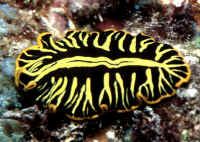08:23garās siltās apakšbikses - tas ir kruta. labi silda un mazliet uzbudina. žēl, ka šodien tās - kā šķiet - vairs nebūs vajadzīgas. |
4:56
10. Februāris 2005
11:06a moš tomēr tās bikses arī šodien uzvilkt? lai interesantāk. |
12:05nē, nevilkšu. ja nu man šodien jāvelk tās virsējās nost, tad es varu nokļūt arī neērtā situācijā. jums ta man nav kauns atklāti stāstīt par savām vilnas garajām apakšbiksēm kultas olas krāsā, bet atbildīgā brīdī pie atbildīgām personām es varu samulst. |
22:06cik interesanti - man jau ir 34 draugi. tā - pēkšņi. |
22:39 - pa laboratorijas līniju Even after many decades of research, the experts still debate how best to classify them. For many years the organisms pictured here were labelled ‘fungus’, because part of their life cycle is like that of many fungi. Mostly, though, they move and feed like one-celled ‘animals’. Yet they make their own cellulose, like a plant. And incredibly, as we shall see, there are times when they look and move like multi-celled animals. Part of their life cycle is also very similar to certain bacteria. Just what are they? Even after many decades of research, the experts still debate how best to classify them. For many years the organisms pictured here were labelled ‘fungus’, because part of their life cycle is like that of many fungi. Mostly, though, they move and feed like one-celled ‘animals’. Yet they make their own cellulose, like a plant. And incredibly, as we shall see, there are times when they look and move like multi-celled animals. Part of their life cycle is also very similar to certain bacteria. Just what are they?link |
22:52 - vēl Of the worms, the Platyhelminthes ("flat worms") are considered the prototypes, having developed such innovations as bilateral symmetry, a head, tail, and three germinal tissue layers (stinging celled animals, comb-jellies... only have two). These simple soft-bodied animals use their skin to breath through and only have one body opening, the mouth serving also as an anus. Of the worms, the Platyhelminthes ("flat worms") are considered the prototypes, having developed such innovations as bilateral symmetry, a head, tail, and three germinal tissue layers (stinging celled animals, comb-jellies... only have two). These simple soft-bodied animals use their skin to breath through and only have one body opening, the mouth serving also as an anus.Platyhelminths are true hermaphrodites... being both male and female. Cross-fertilization is the rule with a "pair" rudely stabbing one another with a hard penile stylet to enact sperm transfer. As you know due to exposure with Planaria, they can also generate new individuals by splitting asexually. |
Powered by Sviesta Ciba